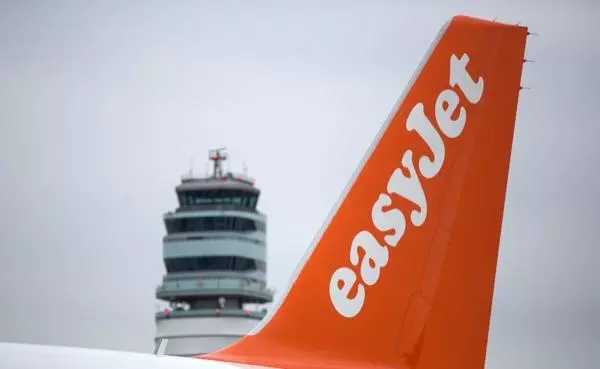Ryanair and easyJet earnings preview: how are Europe's budget airlines faring?
Europe's leading low-cost carriers prepare to report earnings in the week of 19th of May, with investors watching for signs of sustained recovery amid operational challenges and strong travel demand.

Current outlook for European aviation
As Ryanair and easyJet prepare to release their upcoming earnings reports, investors are closely monitoring key indicators that will shed light on the health and trajectory of Europe's leading low-cost carriers.
The European aviation sector continues to navigate a complex landscape, with robust travel demand offset by persistent operational challenges. Both airlines have emerged from the pandemic with restructured operations and clear strategic visions, yet face ongoing headwinds from cost inflation and supply chain disruptions.
The summer 2025 season represents a critical test for both carriers, with advanced bookings providing an early indicator of consumer sentiment. Despite economic uncertainties affecting discretionary spending in other sectors, demand for air travel has shown remarkable resilience.
These earnings reports will provide valuable insights not just into the companies' individual performances, but also into broader industry trends that could impact the entire European aviation sector for the remainder of 2025 and beyond.
Ryanair's performance and strategic position
Ryanair is scheduled to report its fiscal year 2025 earnings on Monday, May 19, 2025. Analysts anticipate the company will post a loss of €0.29 per share in the third quarter (Q3) and EPS of €1.46 for the year, with revenues around €2.3 billion for the quarter and €13.96 billion for the fiscal year.
The airline has faced challenges due to Boeing aircraft delivery delays, leading to a downward revision of its fiscal 2026 passenger growth target to 206 million from an initial 215 million. Despite these setbacks, Ryanair reported a strong fiscal Q3, with a 9% increase in passenger numbers to 44.9 million and a net profit of around €144 million, significantly surpassing analyst expectations. Revenue rose 10% to €2.96 billion, and the company announced an interim dividend of €0.18 per share.
Looking ahead, Ryanair forecasts fiscal 2025 profits between €1.55 billion and €1.80 billion but cautioned that its fourth quarter won't benefit from an early Easter holiday as it did the previous year and might show a 16% drop and loss of €386.5 million in the fourth quarter (Q4) compared to Q4 2024.
CEO Michael O'Leary's typically outspoken commentary will be closely scrutinised for insights on the ongoing Boeing delivery saga, which has forced the airline to adjust its ambitious growth plans and potentially cede market share to competitors with more reliable aircraft supply chains.
easyJet's recovery trajectory
easyJet is set to release its half-year results for fiscal year 2025 on 22 May, 2025. The airline has shown signs of recovery, reporting a 34% increase in profit before tax to £610 million for the year ending September 2024. Additionally, easyJet posted a smaller first quarter (Q1) operating loss of £40 million for the three months ending 31 December, 2024, compared to a loss of £117 million in the previous year. This improvement was attributed to lower fuel costs and increased passenger demand for travel and holiday packages.
Earnings per share (EPS) for the fiscal year 2025 is expected to grow by 10.46% to 104.96p.
The airline's new CEO, Kenton Jarvis, highlighted strong demand for popular summer destinations, with one million more customers already booked. easyJet remains on track to achieve its target of £1 billion in profit before tax within the next three to five years, with a significant contribution expected from its asset-light holiday business model.
easyJet's strategic pivot toward offering packaged holidays represents a significant diversification from its core airline business. This higher-margin segment has shown impressive growth, helping to insulate the company from the thin margins typical of the budget airline sector.
The carrier's fleet modernisation programme continues, with older A319 aircraft being replaced by more fuel-efficient A320neo and A321neo models. This transition is expected to deliver both cost savings and environmental benefits, though the pace of new deliveries will be closely watched for any Airbus supply chain disruptions.
Key metrics to watch in Ryanair's results
Investors watching Ryanair's upcoming earnings should focus on several critical performance indicators beyond the headline revenue and profit figures. These metrics will provide deeper insights into the carrier's operational efficiency and future growth potential.
Load factor – the percentage of available seats filled with paying passengers – remains a crucial measure of capacity utilisation. Ryanair typically targets load factors above 90%, and any significant deviation from this level could signal pricing or demand challenges in certain markets.
Ancillary revenue growth will be another focus area, as Ryanair continues to expand its non-ticket revenue streams. The company has been particularly successful at monetising extras like priority boarding, seat selection, and baggage fees, which contribute substantially to its overall profitability.
Unit cost trends excluding fuel (CASK ex-fuel) will reveal whether Ryanair is maintaining its industry-leading cost discipline. This metric is particularly important given the last couple of years’ inflationary pressures across labour, airport charges, and maintenance costs.
Forward booking commentary for the summer season will perhaps be the most valuable forward-looking indicator. Any softness in pricing or volume for the crucial peak summer months would raise concerns about the carrier’s full-year outlook.
Ryanair analyst recommendations and share price technical analysis
According to LSEG Data & Analytics, 4 analysts have a ‘strong buy’ recommendation for Ryanair, 10 a ‘buy’, 7 a ‘hold’ and 1 a ‘sell’ (as of 16/05/2025).
Ryanair LSEG Data & Analytics chart

Ryanair has a TipRanks Smart Score of ‘9 Outperform’ and is rated as a ‘buy’ with 2 ’buy’, 10 ‘buy’ recommendations (as of 16/05/2025).

The Ryanair share price, up around 18% year-to-date, is trading in record highs at €23.00 whilst remaining above its accelerated April-to-May uptrend line at €22.22. Given its steepness, it is likely to soon be slipped through but support may already be found around the €22.00 mark or at the Wednesday 14 May low at €21.78.
Were a slip through this low to be witnessed, another buying opportunity would present itself in the major January-to-March highs support zone at €21.33-to-€20.90.
Ryanair daily candlestick chart

While no drop through the February-to-March lows at €19.86-to-€19.47 is seen, the medium-term uptrend is deemed to stay intact.
A rise above this week’s €23.00 all-time high would probably engage the €25.00 region, an 11% rise from current levels (as of 16/05/2025). This compares to the median fundamental analysts price target of €23.45.
Focus areas for easyJet's half-year results
easyJet's half-year results will be scrutinised for evidence that the carrier's transformation strategy continues to deliver results. Several key areas will attract particular attention from analysts and investors.
Holiday division performance has become increasingly important to easyJet's overall profitability. The upcoming results should provide updated figures on holiday package bookings, average selling prices, and contribution margins from this higher-value segment.
Network adjustments will also be in focus, as easyJet has been reallocating capacity away from underperforming routes toward stronger markets. Commentary on slot utilisation at key constrained airports like London Gatwick will be particularly relevant.
Cost control initiatives are critical for maintaining competitiveness against ultra-low-cost carriers like Wizz Air and Ryanair. Investors will look for progress on the company's cost-per-seat reduction targets and operational efficiency improvements.
Liquidity and balance sheet strength remain important considerations given the cyclical nature of the airline industry. easyJet has worked to strengthen its financial position post-pandemic, and any changes to capital allocation priorities or fleet investment plans would be significant.
easyJet analyst recommendations and share price technical analysis
As of 16 May 2025 and according to LSEG Data & analytics 5 analysts have a ‘strong buy’ recommendation for easyJet, 11 a ‘buy’ and 6 a ‘hold’.
easyJet has a TipRanks Smart Score of ‘7 Neutral’ and is rated as a ‘buy’ with 6 ’buy’ and 3 ‘hold’ recommendation (as of 16/05/2025).

The easyJet share price has been gradually rising from its October 2022 low at 276.9 pence but over the years has run out of steam just below the psychological 600p mark in April and December 2024. Another attempt seems to be in the making to reach this level.
easyJet monthly candlestick chart

Despite rising by around 37% from its April low at 401.1p, the easyJet share price remains in slightly negative territory year-to-date (as of 16/05/2025).
The easyJet share price is expected to slip out of its clear April-to-May uptrend channel and is expected to revisit its February peak at 538p. The next lower March high at 519.6p may also be revisited.
easyJet daily candlestick chart

While the 200-to-55-day simple moving averages (SMAs) and the January-to-mid-March lows at 503.7p-to-471.3p hold on a daily chart closing basis, the recent medium-term uptrend remains valid.
A rise above the current May high at 555.8p (as of 16/05/2025) would put the December peak at 594p and the psychological 600p region on the map, a rise of approximately 10% from the current share price at 542.6p (as of 16/05/2025).
Fundamental analysts have a median long-term upside target for the easyJet share price around 17% above current levels (as of 16/05/2025) at 683p.
Competitive dynamics in European aviation
Both Ryanair and easyJet are navigating a complex landscape marked by operational challenges and evolving market dynamics. Ryanair's robust passenger growth and strategic expansions position it well for future profitability, despite current headwinds. Meanwhile, easyJet's focus on cost management and diversification through its holiday business offers a promising path toward sustained growth. Investors will be keenly watching the upcoming earnings reports for further insights into each airline's performance and strategic direction.
The European airline industry continues to consolidate, with stronger carriers expanding at the expense of weaker competitors. Both Ryanair and easyJet have been opportunistic in filling capacity gaps left by failed or restructured airlines across various European markets.
Legacy carriers like Lufthansa, Air France-KLM, and International Airlines Group (IAG) have increasingly moved toward premium positioning, creating additional space in the budget segment. This strategic divergence has allowed low-cost carriers to capture a growing share of the short-haul European market.
Environmental regulations and carbon taxation represent growing challenges for all European airlines. Both carriers' investments in newer, more fuel-efficient aircraft will be critical not just for cost control but also for compliance with increasingly stringent emissions requirements.
How to trade Ryanair and easyJet shares
The Ryanair share price has been greatly outperforming the easyJet share price by over 20% year-to-date, trading up over 18% compared to easyJet’s around 2% loss and the FTSE 100 100’s 5% gain.
Ryanair/easyJet/FTSE 100 year-to-date comparison chart

For traders looking to position themselves ahead of these important earnings announcements, several approaches are available through IG's trading and investment platforms.
- Research both airlines thoroughly, examining their financial performance, strategic positioning, and market outlook to inform your trading decisions.
- Decide whether you want to trade or invest based on your view of the companies' prospects and your preferred time horizon.
- Open an account with IG by visiting our website and completing the application process.
- Search for 'Ryanair' or 'easyJet' on our trading platform or app.
- Place your trade, ensuring you have appropriate risk management measures in place given the potential volatility around earnings announcements.
Short-term traders might consider spread betting or CFD trading to capitalise on the share price movements that typically follow earnings releases. These leveraged products allow you to take positions on both rising and falling prices, providing flexibility regardless of your market outlook.
For those with a longer-term view on the European aviation sector, share dealing offers a more straightforward investment approach. This allows you to build positions in either or both airlines and potentially benefit from their recovery and growth over time.
The upcoming earnings reports from Ryanair and easyJet will provide crucial insights into the state of European air travel demand, operational challenges facing the industry, and the effectiveness of each carrier's strategic initiatives. While both airlines face headwinds from aircraft delivery delays and cost pressures, strong underlying demand for travel and strategic focus on their respective strengths position them to navigate these challenges.

